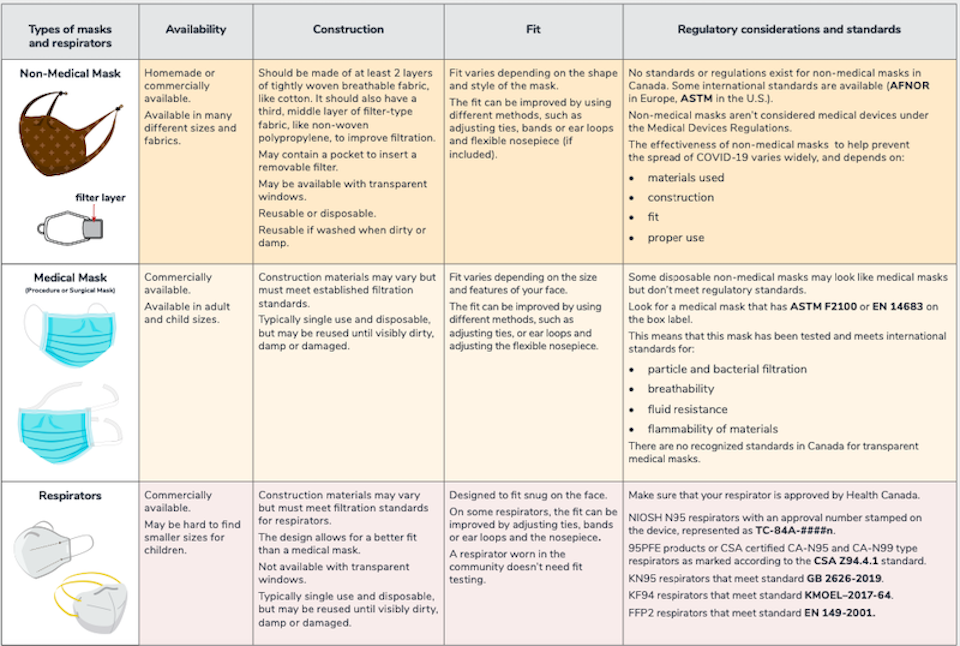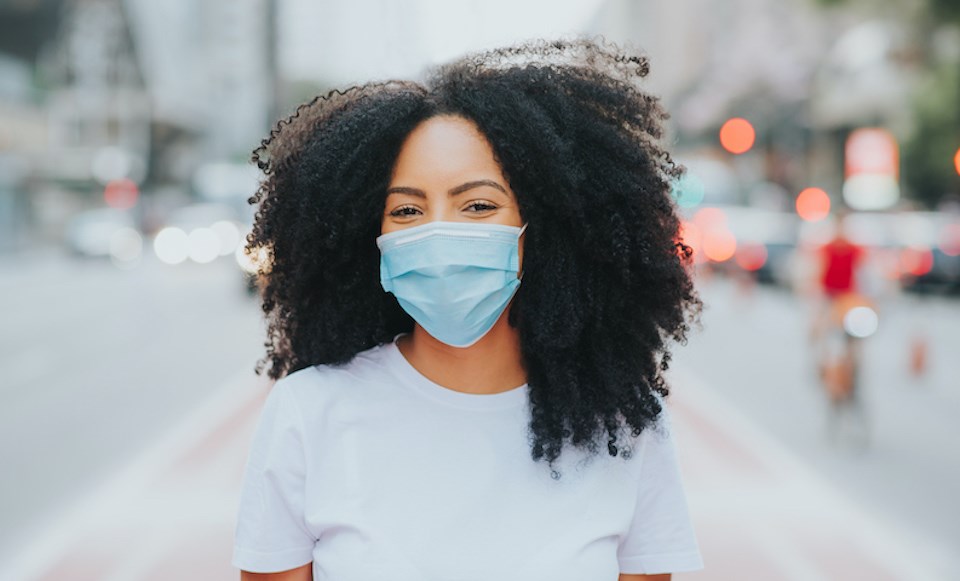As the mercury drops and people spend more time indoors, Canadians are being reminded that wearing a mask is more important than ever.
But what mask you choose plays an integral role in preventing the spread of the coronavirus.
The Public Health Agency of Canada (PHAC) stresses that it continues to recommend three-layer non-medical masks that include a middle filter layer.
On Nov. 12, the PHAC released updated advice that further emphasized that "the degree of protection provided by non-medical masks varies with the construction, the number of layers, materials used, and most importantly, the fit of the mask."
When people gather in crowded spaces with poor ventilation, the risk of transmission is higher. Smaller droplets or aerosols can linger in the air, particularly in indoor settings, which may infect others nearby. The risk increases with activities that involve activities such as close-range conversations, singing, shouting, or heavy breathing (e.g., during exercise).
B.C.'s provincial health officer Dr. Bonnie Henry echoed the sentiment in a press conference on Nov. 16, stating: "If you choose to wear a non-medical mask then we want to make sure that you're wearing one that has the number of layers of protection, that it fits snugly around your nose, and that it has at least three layers and that can include a filter layer in the middle, and that it's made up of tightly-woven fabric.'
But while non-medical masks generally can help prevent the spread of COVID-19, the PHAC notes that medical masks and respirators provide "better protection."
There are currently no standards for non-medical masks in Canada. Medical masks and respirators sold in Canada are required to meet established standards for filtration, breathability, and fluid resistance.
Fully vaccinated individuals can contract and spread COVID-19, so they must still wear face masks. Further, evidence suggests that "protection from COVID-19 vaccines decreases over time in some situations," notes the PHAC.
No matter which type of mask you choose, proper fit is a key factor in its effectiveness.
Don’t use masks or respirators with exhalation valves. The PHAC underscores that "they allow infectious respiratory particles to escape" and don't prevent the spread of COVID-19.

Public Health Agency of Canada advice on non-medical masks
If you choose to wear a non-medical mask, it should be made of:
- multiple layers, including
- at least two layers of tightly woven fabric, such as cotton and
- a third, middle layer of filter-type fabric, such as non-woven polypropylene
- materials that are breathable
Using a filter as a middle layer in your non-medical mask can help to trap smaller infectious respiratory particles.
You can include a filter in your non-medical mask by:
- adding a filter fabric as a middle layer
- inserting a disposable filter into a pocket on the inside of the mask
- filters can be purchased or you can prepare your own using a piece of filter fabric
Reusable masks with an integrated filter layer can be washed multiple times.
Disposable filters should be:
- changed as directed by the manufacturer
- removed from the mask before washing
Find more information about the updated guidance on face masks with the Public Health Agency of Canada online.




